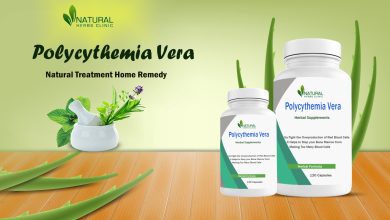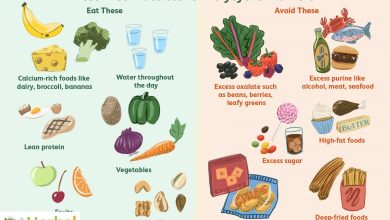The Ultimate Polycythemia Vera Diet Plan: What to Eat & What to Skip

Polycythemia Vera (PV) is a rare blood disorder characterized by the overproduction of red blood cells in the bone marrow. This leads to thicker blood, increasing the risk of blood clots, heart attack, and stroke. While medications and regular phlebotomy are the primary treatments, adopting a well-structured Polycythemia Vera diet can significantly improve quality of life and reduce complications. This comprehensive guide will help you understand the best dietary practices for PV, what to eat, what to avoid, and why your plate matters in managing this chronic condition.
What is Polycythemia Vera?
Polycythemia Vera (PV) is a rare, chronic blood cancer characterized by the overproduction of red blood cells (erythrocytosis) in the bone marrow due to a mutation in hematopoietic stem cells. It is classified as a myeloproliferative neoplasm (MPN).

Key Features of PV
- Excessive RBC Production: The bone marrow produces too many red blood cells, leading to thickened blood (increased blood viscosity).
- Mutation Involved: Most patients (≥95%) have a JAK2 V617F mutation, which causes uncontrolled cell growth.
- Other Blood Cell Increases: White blood cells (leukocytosis) and platelets (thrombocytosis) may also be elevated.
Related Article: Exploring Polycythemia Vera Alternative Treatments: Natural Approaches to Managing Symptoms
Symptoms
- Hyperviscosity-related:Headaches, dizziness, blurred vision, fatigue.
- Pruritus (itching), especially after warm showers.
- Splenomegaly(enlarged spleen) → abdominal discomfort.
- Thrombotic risks:Increased risk of blood clots (DVT, stroke, heart attack).
- Bleeding tendencies(due to abnormal platelet function).
- Erythromelalgia(burning pain & redness in hands/feet).
The Ultimate Polycythemia Vera Diet Plan
Polycythemia vera (PV) is a rare, chronic blood disorder characterized by an overproduction of red blood cells in the bone marrow. This abnormal increase in red blood cells thickens the blood, slowing its flow and increasing the risk of blood clots. Managing PV typically involves medications, phlebotomy (regular removal of blood), and lifestyle adjustments. While there is no specific “cure” for PV through diet, nutritional choices can play a significant role in managing symptoms, reducing complications, and supporting overall health.
A comprehensive guide to the ultimate diet plan for individuals with polycythemia vera emphasizing foods that promote heart and vascular health, support blood flow, and help reduce clotting risks.
Understanding the Role of Diet in Polycythemia Vera
Although PV is not caused by poor diet or nutritional deficiencies, what you eat can either ease or aggravate symptoms. For example, blood viscosity (thickness) and clotting can be influenced by your intake of fats, sugar, hydration, and certain vitamins. Additionally, maintaining a healthy weight is essential, as obesity can increase clotting risks.
A good diet plan for PV focuses on:
- Reducing the risk of blood clots
- Supporting cardiovascular health
- Maintaining optimal hydration
- Managing weight and inflammation
- Avoiding nutrient imbalances, especially iron
Related Article: Polycythemia Vera Treatment Diet Revealed: Unlock The Power Of Food
What to Eat on a Polycythemia Vera Diet
A PV-friendly diet should focus on improving blood flow, reducing inflammation, supporting heart health, and managing iron intake. Here’s what your diet should include:
1. Heart-Healthy Fats
Because PV increases the risk of blood clots and heart disease, incorporating healthy fats is critical.
Include:
- Omega-3 fatty acids from fatty fish like salmon, sardines, and mackerel
- Nuts and seeds such as walnuts, flaxseeds, and chia seeds
- Avocados
- Olive oil (preferably extra virgin)
These fats help lower bad cholesterol levels, reduce inflammation, and keep your arteries flexible and clear.
2. Low-Iron Foods
Many PV patients need to be cautious about iron intake, especially if they are not undergoing phlebotomy frequently.
Iron-lowering or low-iron options:
- Egg whites
- Dairy products like yogurt, cheese, and milk
- White rice and pasta (instead of brown rice or whole grains which are higher in iron)
- Fruits like apples, grapes, and berries
Note: Always talk to your hematologist about your iron levels. Some patients with PV might not need to limit iron, especially if they are iron-deficient from treatment.
3. Anti-Inflammatory Vegetables
Inflammation plays a significant role in PV symptoms. A diet rich in anti-inflammatory vegetables can help.
Best options:
- Leafy greens like spinach, kale, and arugula
- Cruciferous vegetables like broccoli, cauliflower, and Brussels sprouts
- Sweet potatoes
- Bell peppers
- Tomatoes (rich in lycopene)
These veggies are rich in antioxidants, fiber, and vitamins that promote overall health.
4. Whole Fruits (Low-Iron Choices)
Fruits are nutrient-dense and provide antioxidants that reduce oxidative stress and inflammation.
Fruits to focus on:
- Berries (strawberries, blueberries, raspberries)
- Apples
- Grapes
- Pears
- Citrus fruits (oranges, lemons, limes)
Limit high-iron fruits like dried apricots or prunes if you’re managing iron intake.
5. High-Fiber Foods
Fiber helps control blood sugar, reduce cholesterol, and keep your digestion smooth—all helpful in managing PV.
Good fiber sources:
- Oats
- Legumes (lentils, chickpeas, black beans)
- Quinoa
- Whole grain breads and cereals (unless on a low-iron plan)
- Psyllium husk (as a supplement)
Be mindful if whole grains increase your iron levels, and adjust accordingly with your doctor’s advice.
6. Lean Proteins
Protein is essential, but you should choose lean and low-iron sources when possible.
Best protein sources:
- Fish (especially omega-3-rich)
- Poultry (skinless chicken or turkey)
- Tofu and tempeh
- Eggs
- Low-fat dairy products
Avoid red meats, which are high in heme iron, unless instructed otherwise by your physician.
7. Hydration: A Critical Component
Staying well-hydrated is a non-negotiable part of the Polycythemia Vera diet. Proper hydration helps thin the blood, improving circulation and reducing clot risk.
Tips:
- Aim for 8–12 glasses of water per day
- Avoid sugary drinks and sodas
- Herbal teas are a great addition (especially ginger or turmeric for anti-inflammatory benefits)
Related Article: Polycythemia Vera Management Often Does Not Follow Guidelines
What to Skip or Limit on a Polycythemia Vera Diet
Just as important as what you eat is what you should avoid or limit to help manage your condition. Let’s look at the top foods and habits to stay away from.
1. Red Meat and Organ Meats
Beef, liver, and other red or organ meats are high in iron, particularly heme iron, which is easily absorbed by the body. This can worsen PV symptoms by further increasing red blood cell production.
Limit or avoid:
- Beef
- Lamb
- Liver, kidneys, and heart
- Sausages and cured meats
2. Iron-Fortified Foods
Some cereals, breads, and grains are fortified with iron. Check food labels to avoid unintended iron intake.
Avoid or check labels on:
- Fortified breakfast cereals
- Enriched white flour products
- Granola or protein bars with added iron
3. Alcohol
Alcohol can interfere with bone marrow function and increase dehydration, which thickens the blood.
Recommendations:
- Limit or avoid alcohol entirely
- If consuming, stick to moderate intake (1 drink/day for women, 2 for men)
- Avoid binge drinking or cocktails high in sugar
4. Sugary and Processed Foods
These foods can increase inflammation, worsen insulin resistance, and contribute to heart disease.
Avoid:
- Candy, cakes, cookies, and pastries
- Sugary beverages
- Fast food and fried snacks
- Processed microwave meals
Focus on natural, unprocessed foods as much as possible.
5. Green Tea and Some Herbal Supplements
Surprisingly, green tea and certain herbal products may reduce platelet function, which can increase bleeding risk, especially for PV patients on aspirin or blood thinners.
Avoid or limit:
- Green tea (especially concentrated forms)
- Ginkgo biloba
- Ginseng
- Garlic supplements
- Fish oil supplements (if you’re already eating fish)
Always consult your doctor before taking any herbal or over-the-counter supplements.
Lifestyle and Eating Habits to Adopt
Your Polycythemia Vera diet should go hand-in-hand with other healthy habits to maximize its benefits.
1. Eat Small, Frequent Meals
Large meals can strain digestion and lead to post-meal sluggishness. Smaller meals help maintain steady energy and metabolic balance.
Try:
- 3 main meals and 2 healthy snacks per day
- Balanced portions of protein, fats, and complex carbs
2. Practice Mindful Eating
Eat slowly, savor each bite, and avoid distractions like screens. This helps prevent overeating and supports digestion.
3. Exercise Regularly
Diet alone won’t do it all. Gentle, regular activity like walking, swimming, or yoga promotes circulation and cardiovascular health.
4. Track Your Symptoms and Food
Keep a food diary to track how different foods affect your symptoms like fatigue, itching, or headaches. This will help you identify patterns and fine-tune your diet with your healthcare provider.
Related Article: Painful Burning or Numbness of the Hands and Feet: How to Relief
Sample One-Day Polycythemia Vera Diet Plan
Here’s a sample daily meal plan that aligns with PV dietary goals:
Breakfast:
- Oatmeal with blueberries, flaxseeds, and almond milk
- Herbal tea or water with lemon
Mid-Morning Snack:
- Apple slices with a tablespoon of peanut butter
Lunch:
- Grilled salmon salad with spinach, arugula, cucumbers, cherry tomatoes, olive oil dressing
- Whole-grain crackers
- Sparkling water
Afternoon Snack:
- Low-fat Greek yogurt with chia seeds
Dinner:
- Grilled chicken breast
- Steamed broccoli and roasted sweet potatoes
- Small side of quinoa (if iron intake is not restricted)
- Herbal tea
Before Bed (optional):
- A pear or a few grapes with a handful of walnuts
Supplements and the Polycythemia Vera Diet
Always consult your doctor before adding supplements. In general:
- Avoid iron supplements unless prescribed
- Vitamin D may be beneficial if deficient
- Omega-3 supplements (only if you don’t eat enough fish)
- Multivitamins should be iron-free
Never self-prescribe. Even vitamins and “natural” Supplements for Polycythemia Vera can affect your blood viscosity or interact with medications.
Conclusion
The Polycythemia Vera diet is not just about food it’s a lifestyle that supports your treatment plan and enhances daily wellness. While no specific foods will cure PV, choosing the right meals and avoiding harmful ones can help regulate blood thickness, reduce inflammation, and protect your heart. With consistent, mindful eating habits, the Polycythemia Vera diet can become one of your strongest allies in living a full, energized, and balanced life.
Related Article: Navigating the Use of Hydroxyurea for Polycythemia Vera Recovery
Related Article: Polycythemia Vera Life Expectancy: Can You Live a Normal Life?
Related Article: New Treatments for Polycythemia Vera: What the Latest Research Reveals




